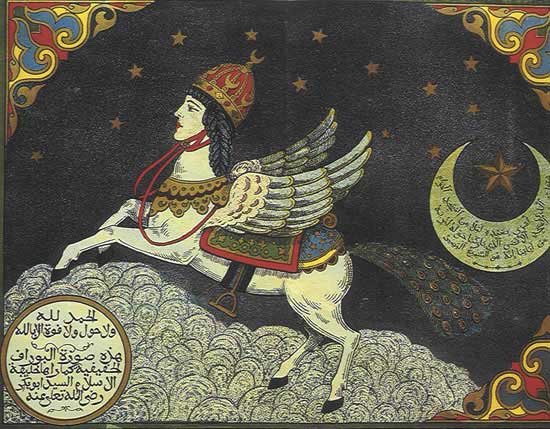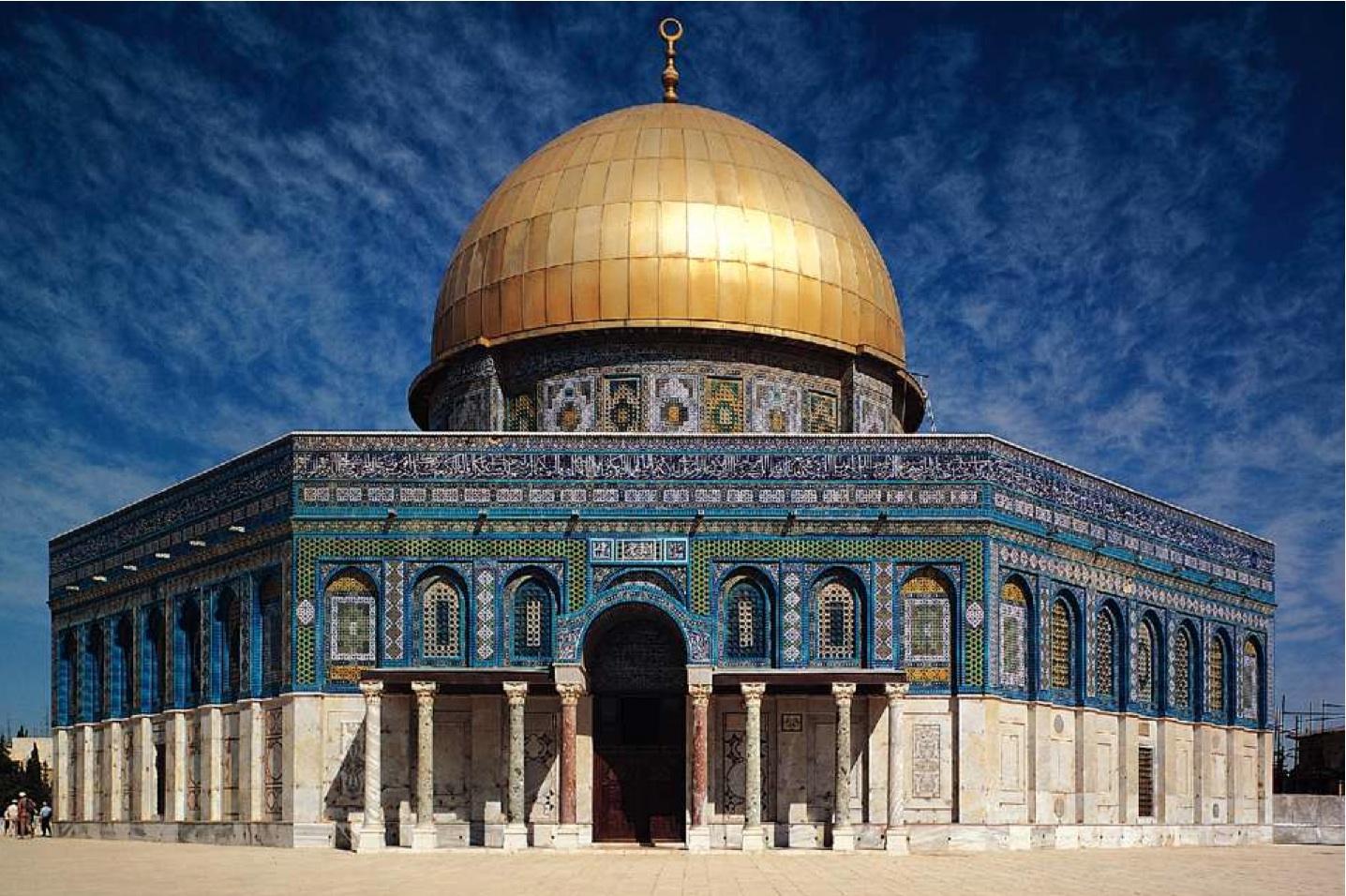Early Islamic Destruction Layer?
Preserving the Heritage of Everyone
Amidst all the stress of trying to find the funding to keep our research lab open, we cannot forget our purpose: to share our research with you. We truly believe that our research is important to the heritage of the all who connect to the Temple Mount: billions of people across the world in all three of the world’s major monotheistic religions. We are finding artifacts that are part of the heritage of Jews, Pagans, Christians, Muslims, and all those in between. We’ve written recently about the Christian connection to the Temple and the Jewish connection to the Temple, so today we are going to share some Islamic history of the Temple Mount.
Lailat al Miraj

Buraq as seen on a reproduction of a 17th century Indian Mughal miniature
Last night marked the beginning of the holiday of Lailat al Miraj, which falls on the 27th day of Rajab and like the Jewish calendar, begins at nightfall the day before. This is the Muslim holiday that commemorates the Prophet Muhammad’s nighttime journey from Mecca to the “Farthest Mosque” where he then ascended to heaven, met G-d and earlier prophets, and was told of the duty of Muslims to recite Salat (ritual prayer) five times a day. Muslims believe that the “Farthest Mosque” refers to the Al-Aqsa Mosque on the Temple Mount here in Jerusalem. They believe that two angels provided the Prophet Muhammad with the mythical winged steed called Buraq, and they named the Buraq Wall (also known as the Western Wall or Kotel) as the place where Muhammad tied this winged steed. In some traditions, Buraq has the head of a women and the tail of a peacock. The full story of Lailat al Miraj are described in chapter 17 of the Quran and also in hadith, supplemental writings about the life of Muhammad.
 Finds
Finds
The Temple Mount’s history is not only rich during the First and Second periods, though those have been in the news a lot recently. We have recovered a huge amount of material from the Early Islamic period and the Ottoman empire including the golden glass mosaics from the original Dome of the Rock and many ottoman smoking pipes. In September we also recovered this beautiful mother of pearl decoration with the Dome of the Rock on it. You may also have heard about the many Ottoman seals that have been recovered by our project including one with the name of the Deputy Mufti of Jerusalem, a possible ancestor of the current leader of the Waqf.
- Mother of Pearl Inlay
- Smoking Pipe (Ottoman)
- Golden Mosaics from the Dome of the Rock
- 18th Century seal of Sheick ‘Abd al-Fattah al-Tamimi
- 18th Century seal of Sheick ‘Abd al-Fattah al-Tamimi
Last summer, we recovered an intact oil lamp from the Early Islamic period. While that may seem like an obvious find in most excavations, because the material that we are sifting was excavated by bulldozer, everything we find is broken. To find something intact is quite special for our project. Even more interesting than that, the cluster of earth in which the oil lamp was found included many other artifacts (including many large pieces) from the earliest stages of Islamic occupation on the Temple Mount itself. The finds seem to come from a violent destruction of the site, possibly the earthquake of 658 CE. Usually, large or unbroken finds like this are only found in sealed layers of excavations. These finds from the Temple Mount indicate the possibility that at some time in the last millennium, someone dug a hole somewhere on the Temple Mount and hit an Early Islamic layer with lots of pottery. The debris from this dig was dumped in the southeastern corner of the Temple Mount and was subsequently removed by the Waqf in 1999, reaching our hands.

Early Islamic Period (Abbasid) oil lamp Credit: FARLI.org
Unfortunately I can’t show you ours until more research has been done. Here is a similar Early Islamic Period (Abbasid) oil lamp which will give you some idea of what we are talking about. Credit: FARLI.org.
Finding the remains of the destruction caused by the earthquake of 658 CE is one of the more interesting things we have discovered in our research, and is greatly dependent on the statistical analysis of our artifacts. Click here for more information about our methodology and our use of statistics to understand archaeological data.
Discover more from The Temple Mount Sifting Project
Subscribe to get the latest posts sent to your email.


 Finds
Finds














Reblogged this on Kattukse Vrienden voor Israël.